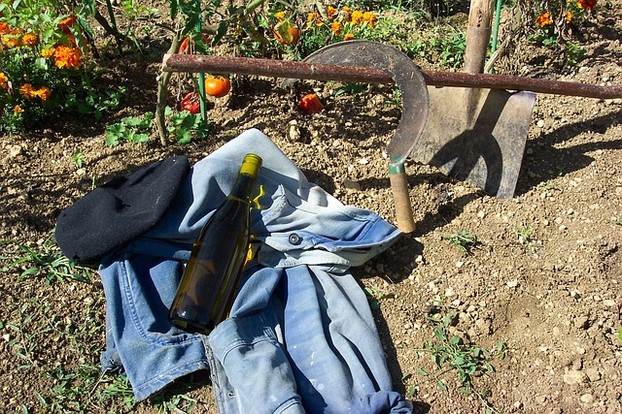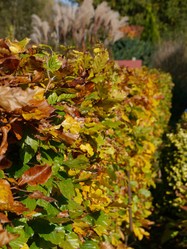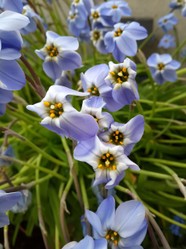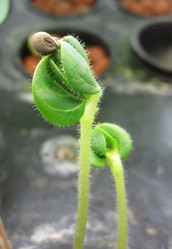January 2023, the Christmas holiday is yet unfinished and the early January weather is inclement, but a group of enthusiasts meet in a field and find their allotted place in one of two long hedges. The signal is given for five hours of unceasing effort. The national hedgelaying championship is on. Although there are about thirty local styles of hedge, each adapted over time to meet local needs and conditions, only nine categories are tested. Each of these has its own winner. There is a supreme champion and a ladies champion.
Hedges have great antiquity in North West Europe. Julius Caesar complained that in Belgium hedges obstructed his troops. As if the Belgae cared. Archaeologists think that there is a small number of hedges in England that were present in the Bronze Age, three thousand five hundred years ago. Many hedges in England date back to the eighteenth century enclosures, and these are often made of hawthorn. A few older hedges remain from the time when hedges were composed of barberry, but most barberry hedges were grubbed up when barberry was found to host a fungus that damaged wheat crops. Blackberry is often present, and I have often foraged this for making wine. I have also foraged elderberry from an old hedge for wine making.
The destruction of hedgerows in the name of modern farming after the Second World War was disastrous and has had to be rectified. Hedges provide shelter for sheep and cattle in winter conditions. For this reason hedges in the North often form a pretty solid barrier down to ground level. In sheep territory solid barriers down to ground level render the hedge stockproof against escaping lambs. So hedges not only defend stock against wind and rain, but also prevent it from escaping.
But there is another use not immediately apparent to the agri-barons who grabbed up farming land after the war. Hedge roots also serve to bind the soil together. Tree and shrub roots hold soil particles together and the barriers obstruct soil particles that are being blown by wind. This effect, discovered in America in the Dustbowl era, when soil suffered wind erosion, became evident on a smaller scale in England in East Anglia, when high winds over the peaty East Anglian soils resulted in dust storms that have eroded this precious resource.
Another use of hedges is as a home for wild life. Many birds, such as the tiny wren, nest in the intricate three dimensional maze of branches that the hedge provides, safe from larger predators. Hedgehogs and a multiplicity of insects find a home among the branches. There is also the capacity of a network of hedges forming wildlife corridors to facilitate wild creatures' movements, thus preventing the genetic threat that comes with isolated populations inbreeding.
Hedges, you might notice, are less susceptible to wind damage than solid fences are. You will often see a wind damaged fence, I have never seen significant wind damage in a hedge, save for the occasional uprooted tree. Wind passes through them ,but loses some of its force.








 TheThousand Year Gardenon 11/26/2025
TheThousand Year Gardenon 11/26/2025
 Women of the Gospelson 10/11/2025
Women of the Gospelson 10/11/2025
 Religious Gardenson 08/25/2025
Religious Gardenson 08/25/2025
 Doctor of the Church: John Henry Newmanon 08/03/2025
Doctor of the Church: John Henry Newmanon 08/03/2025



Comments
Sometimes they, are. It depends on the winemaker.
Thank you for your comment below, in answer to my previous observation and question.
Are apple and elderberry ever fermented together by British Isles-ers?
The exact order of names is not relevant, but the name apple and BlackBerry seems to be the commoner usage.
Thank you for your comments below, in answer to my previous observation and question.
Your association of blackberry and apple juice in a fermentation availing blackberry and apple intrigues me.
Is the above product known as apple and blackberry wine or as blackberry and apple wine or both?
Yes. BlackBerry jam is very popular, and BlackBerry wine is popular among amateur wine growers. Blackberry is popular when fermented with apple juicebto make blackberry and apple.
Thank you for your comments below, in answer to my previous observations and questions.
Blackberry hedges appeal to some Unitedstatesians as functional and ornamental landscaping and as edible, potable homemade food.
Blackberry wine appears among appreciated home-made and store-bought alcoholic drinks even as blackberry fruits associate with fresh, home-made jams, jellies, pastries, salads, soups and syrups.
The above-mentioned foods perhaps attract east pond-side palates, correct?
I would certainly choose these three berries, as they are native to where i live and are easily available.
Would blackberry, elderberry and hawthorn be your choices for hedges if you were to have them put in for yourself or for someone else?
BlackBerry,elderberry and hawthorn are parts of the Cornish and Devonian hedges,but the distinguishing feature of these hedges is not the plants,but the method of construction. .
Your article describes blackberry, elderberry and hawthorn hedges in what I'm interpreting as laudatory terms (with which I agree).
It has a similarly (understandably) laudatory approach to Cornish and Devonese hedges.
Were Cornish and Devonese hedges of blackberry, elderberry and hawthorn or of some other sentient plant?